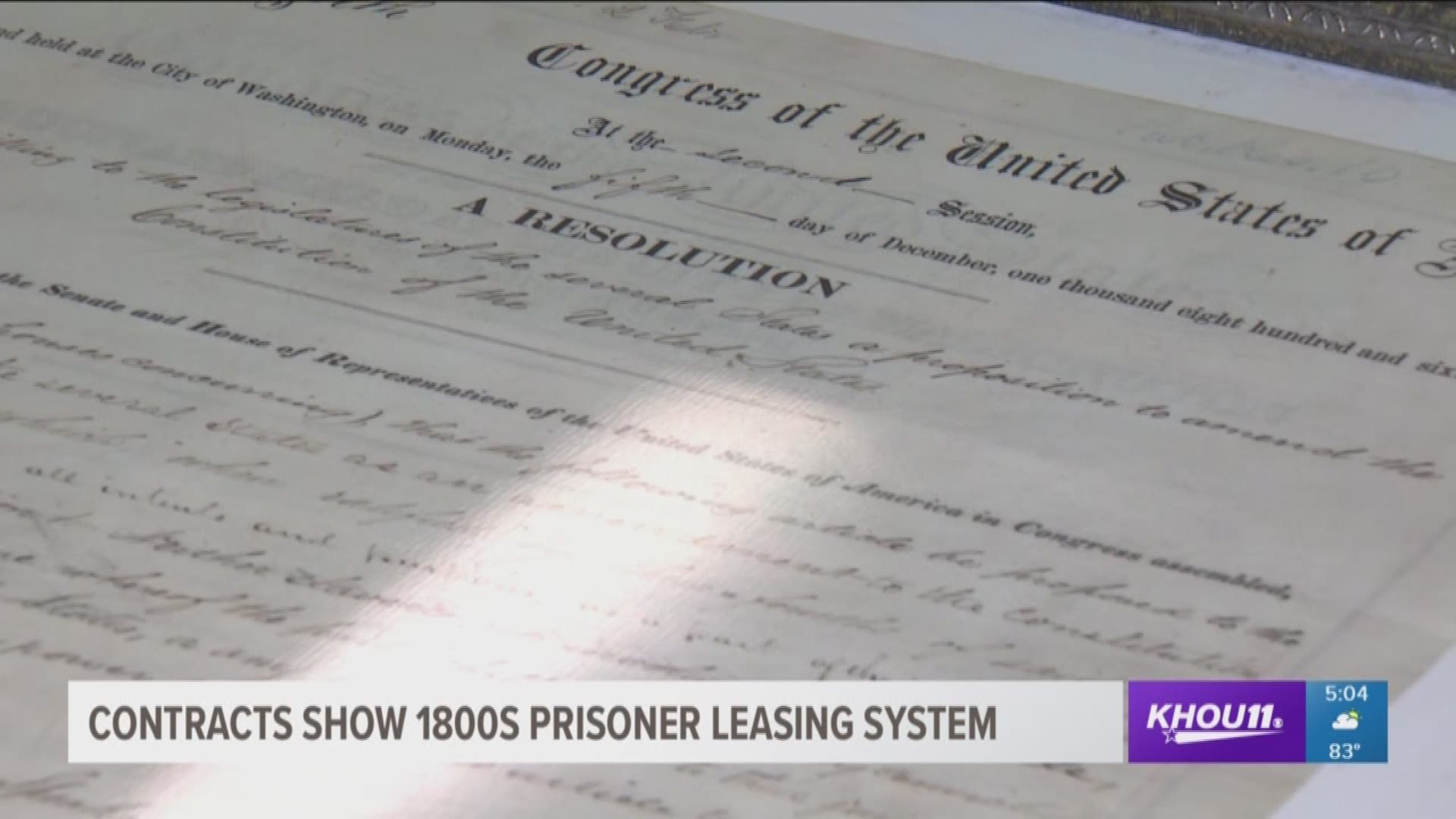FORT BEND COUNTY, Texas - The discovery of human remains in Sugar Land several months ago gained international attention.
The remains opened a window into a dark period of state history concerning the convict leasing system in place at the turn of the century.
Since construction crews first unearthed some of the 94 remains, local activists have made a discovery of their own. They found some of the very contracts used as part of the system.
Samuel Collins III was doing research at Rosenberg Library in Galveston when he found duplicates of contracts. Although the documents state what activists suspected they would, Collins says it’s powerful and disturbing to see in print.
The contracts are from 1891, 1893 and 1895, between the Galveston-based Ball Hutchings and Company and Texas State Penitentiaries. They are for farm labor.
“In the contract, the No. 2 stipulation is that the convicts whose labor is to be furnished under the contracts shall be Negroes,” Collins said.
Collins says that line is extraordinarily telling.
“It was not just simply about convicts. It was specific convicts they were basically trying to re-enslave,” he said of “The Leasing and Labor Project.”
Collins has been trying to shed light on the state’s “convict leasing system” for years. The subject recently received international attention when 94 sets of remains were discovered by construction crews at the site of a former plantation in Sugar Land.
Experts believe the remains belong to black prisoners – among them former slaves – leased out to private businesses so the State could make a profit.
Archeologists say the prisoners found in Sugar Land were as young as 14, and as old as 74.
“It shows you the system was being used even against children, sometimes locking children up as even as young as 10, 11 years old,” Collins said.
The contracts show that the State of Texas was paid $17 a month by Ball Hutchings and Company for each inmate.
“If you go back to the historical record, the Texas agricultural average wage was between 13 to 14 dollars per laborer, per month," said local economist Norman Pappous, a former City of Galveston councilman. "That means they were paying a premium for prison labor because they could get more productivity out of prison labor through means we don’t really want to talk about.”
The companies used in the system would house and feed the inmates. Historians, however, say these so-called “work farms” were atrocious.
It was estimated, even back then, that a convict could expect to live a mere 7 years due to the grueling labor, unsanitary conditions and the likelihood of being shot by guards.
“They had total disrespect for the life of a prisoner, so they would work them to death and just arrest more people,” Collins said.
Those contracts in The Rosenberg Library in Galveston were donated by the business itself, Ball Hutchings and Company.
By the end of 1912, all contracts between state prisons and private enterprises had ended. Texas Governor Oscar Branch Colquitt is credited with making prison system reforms.

